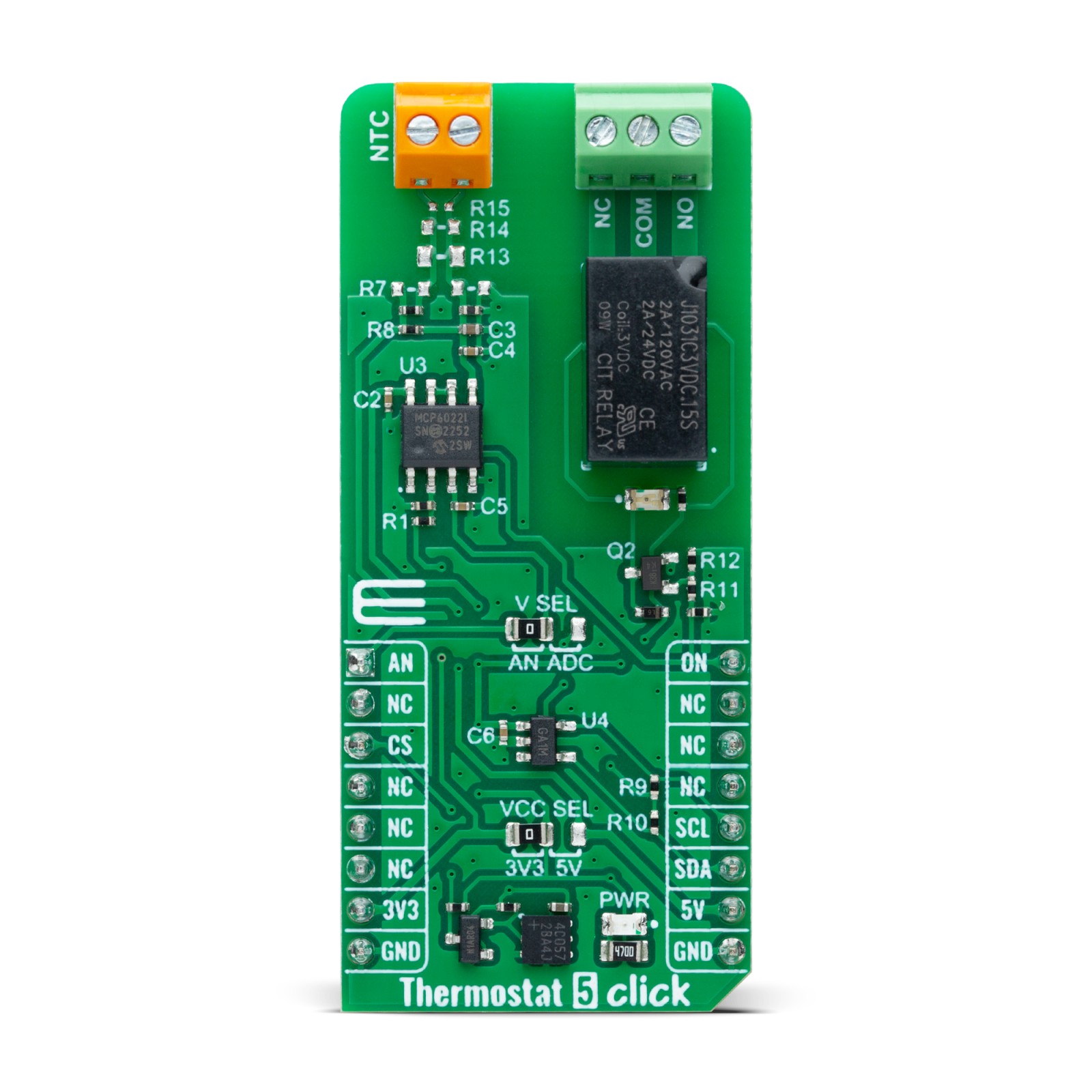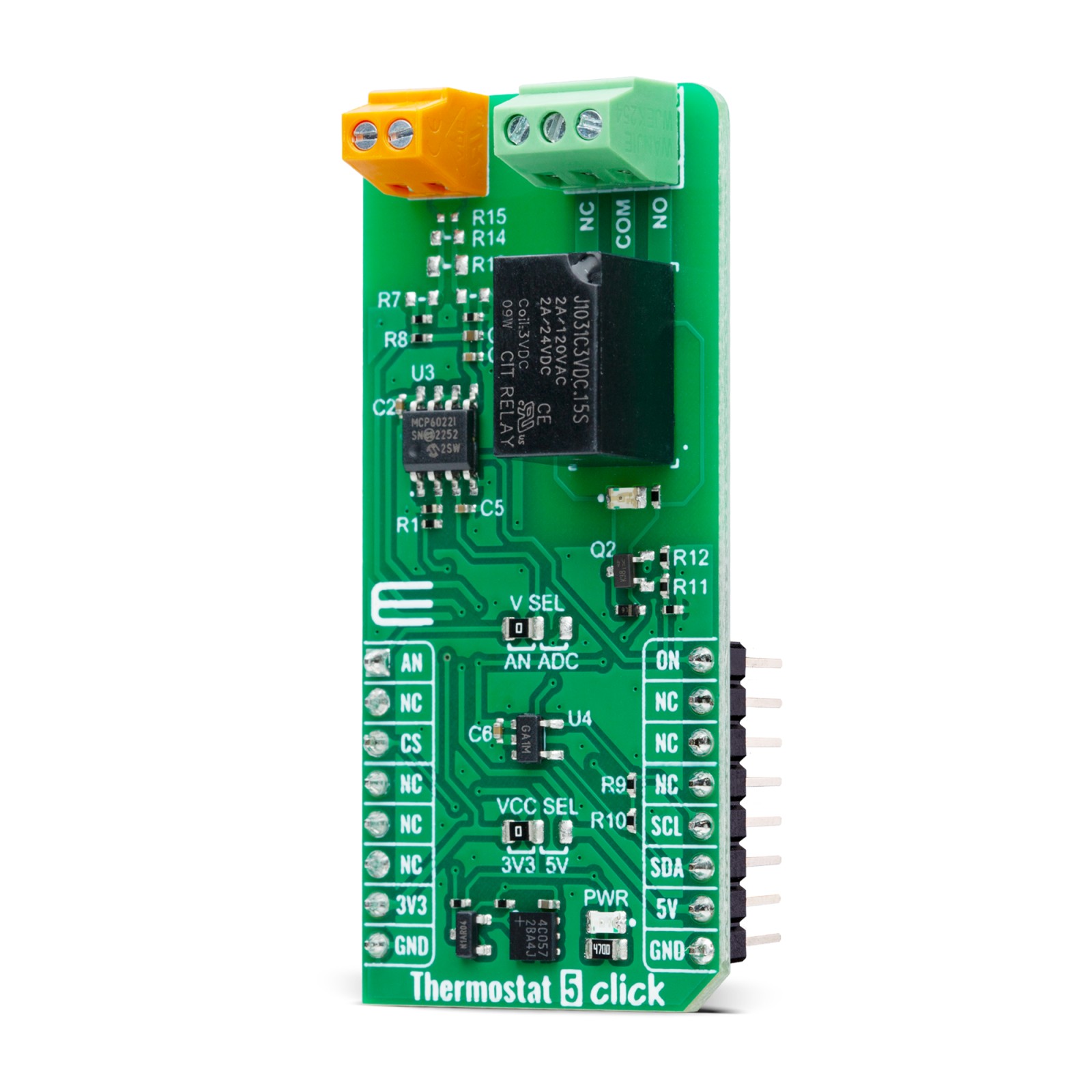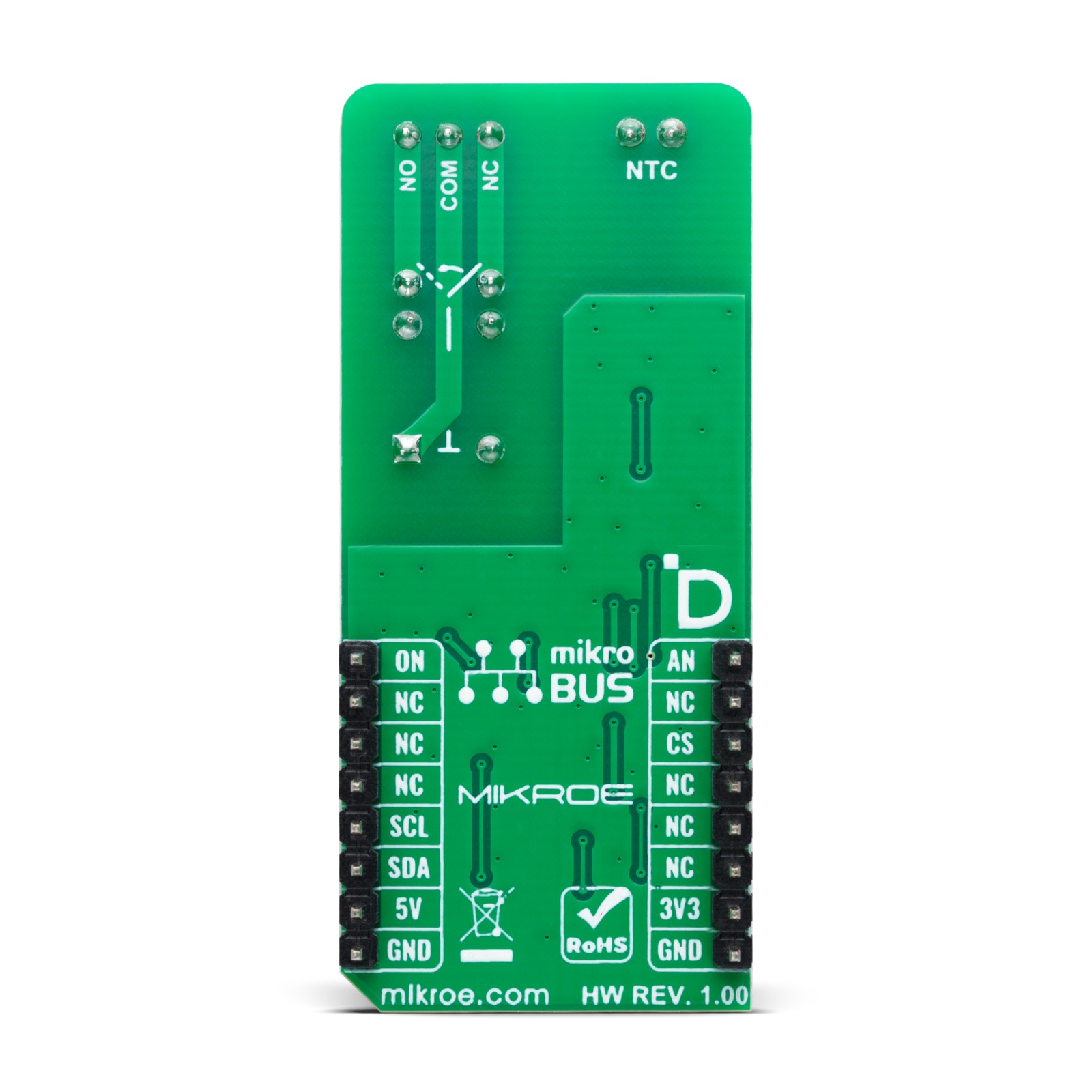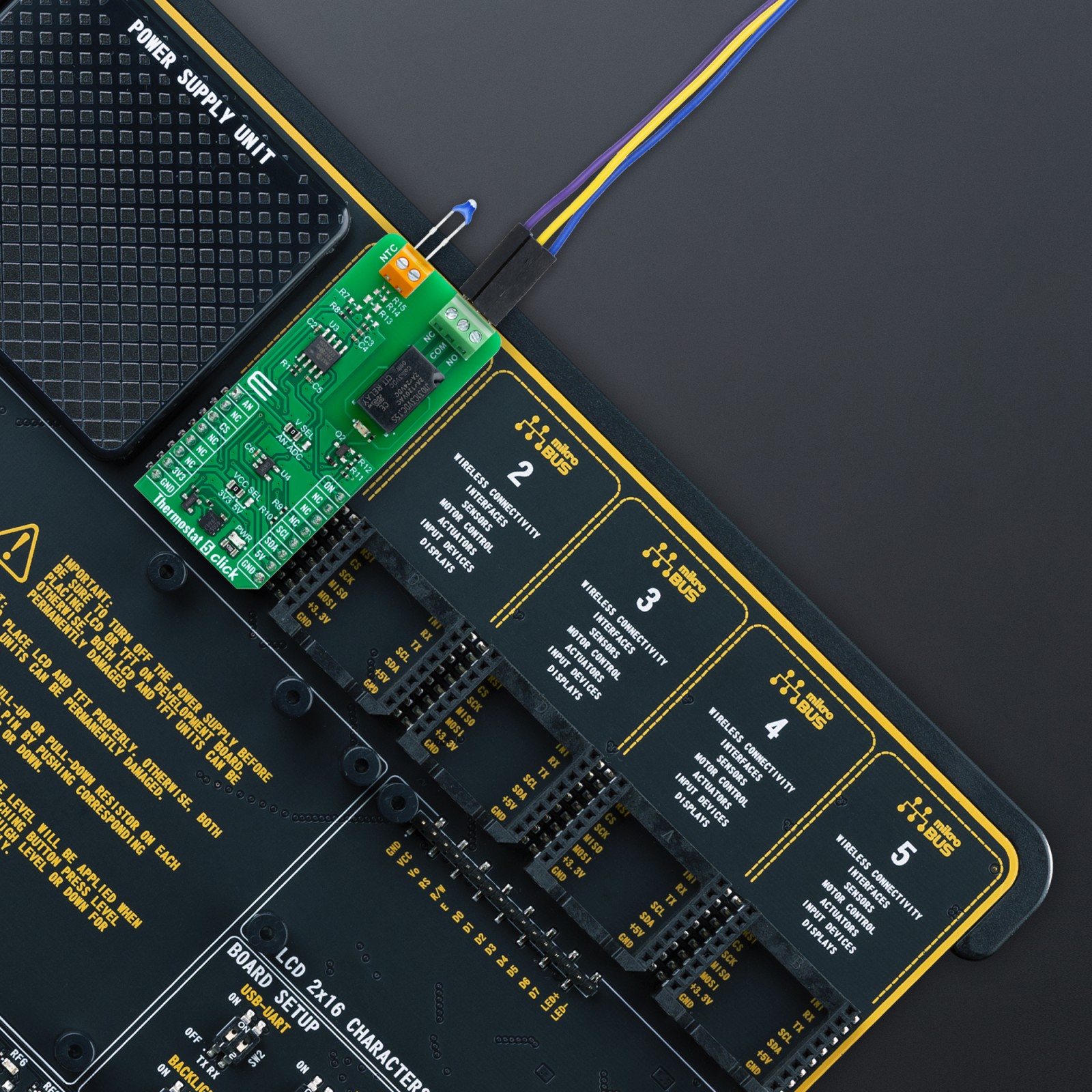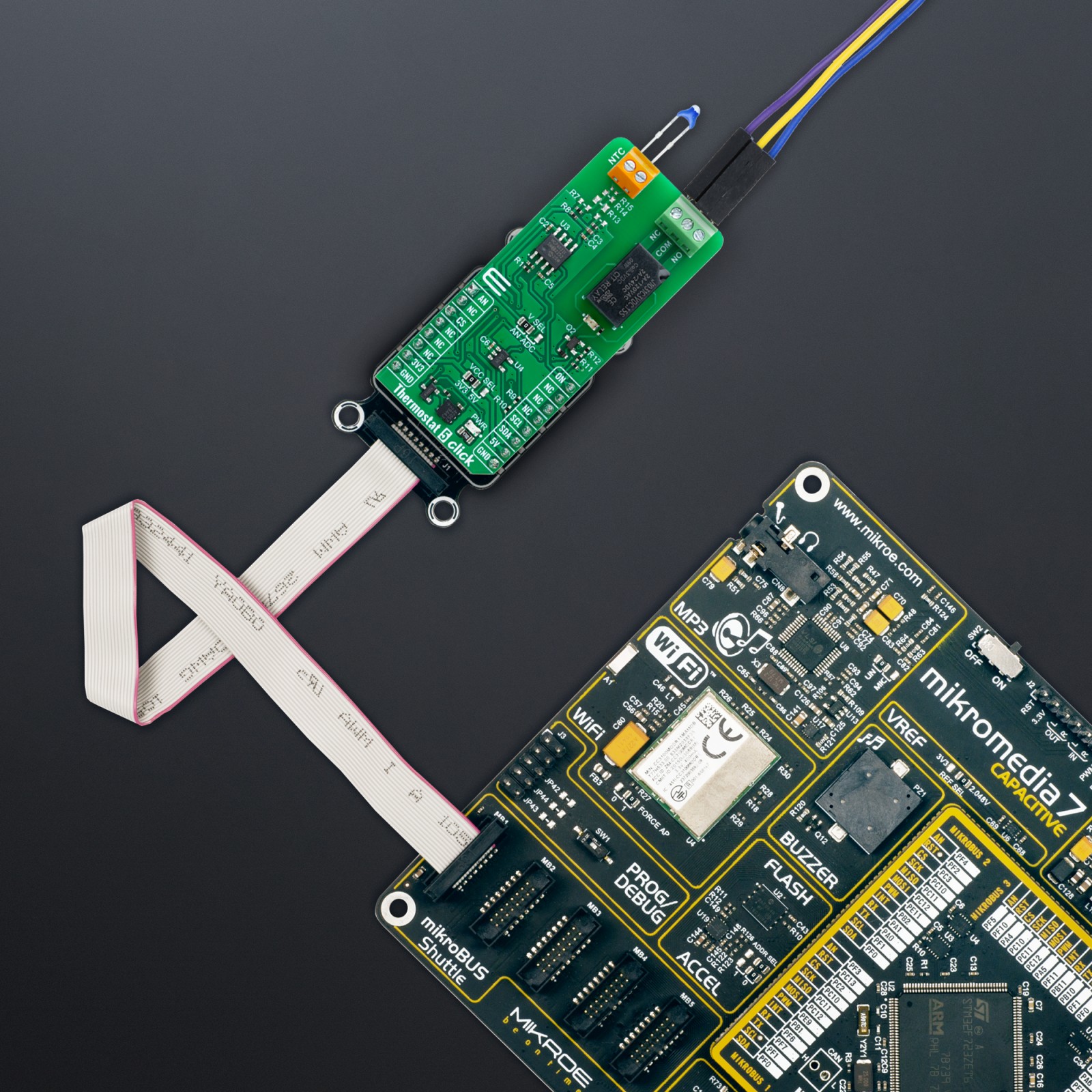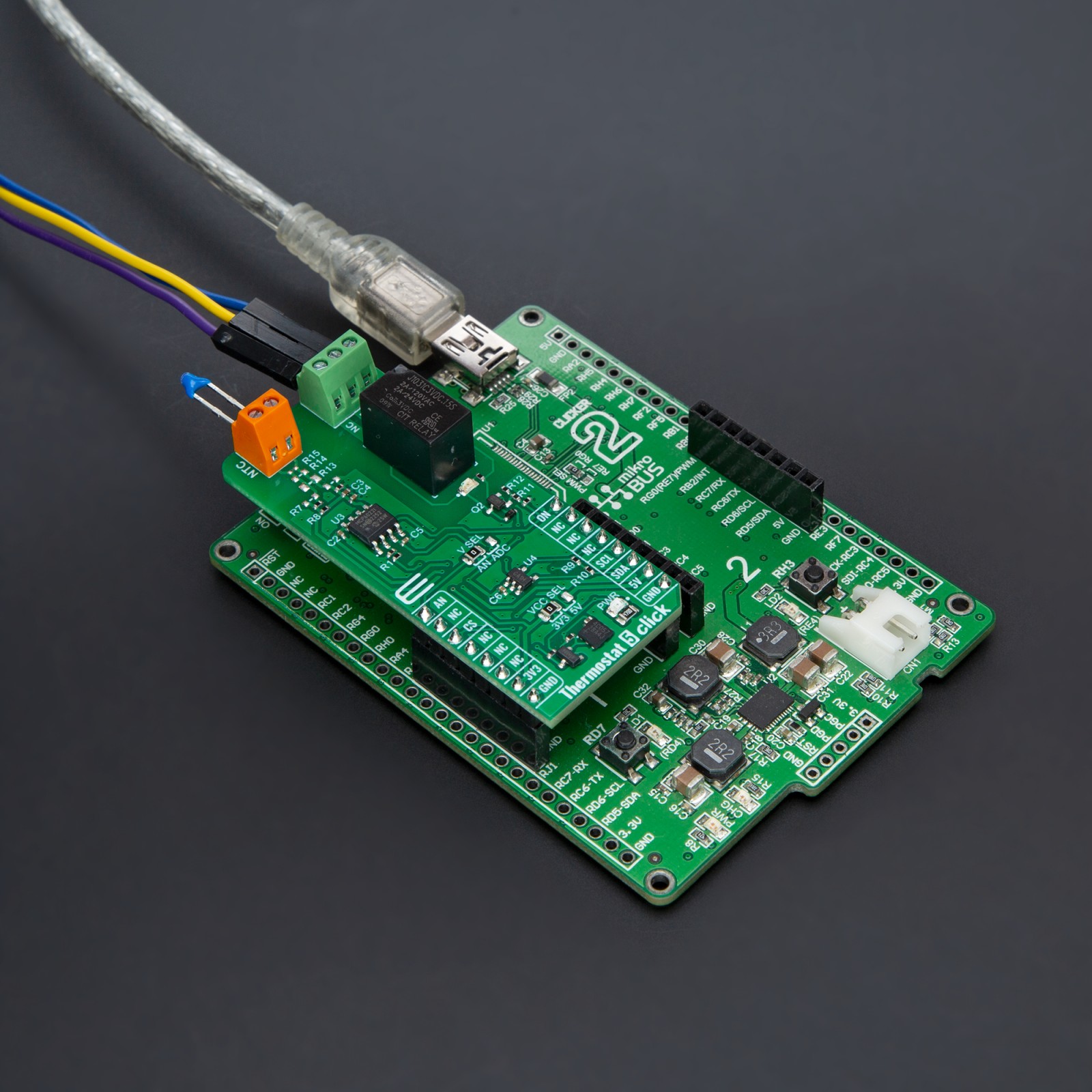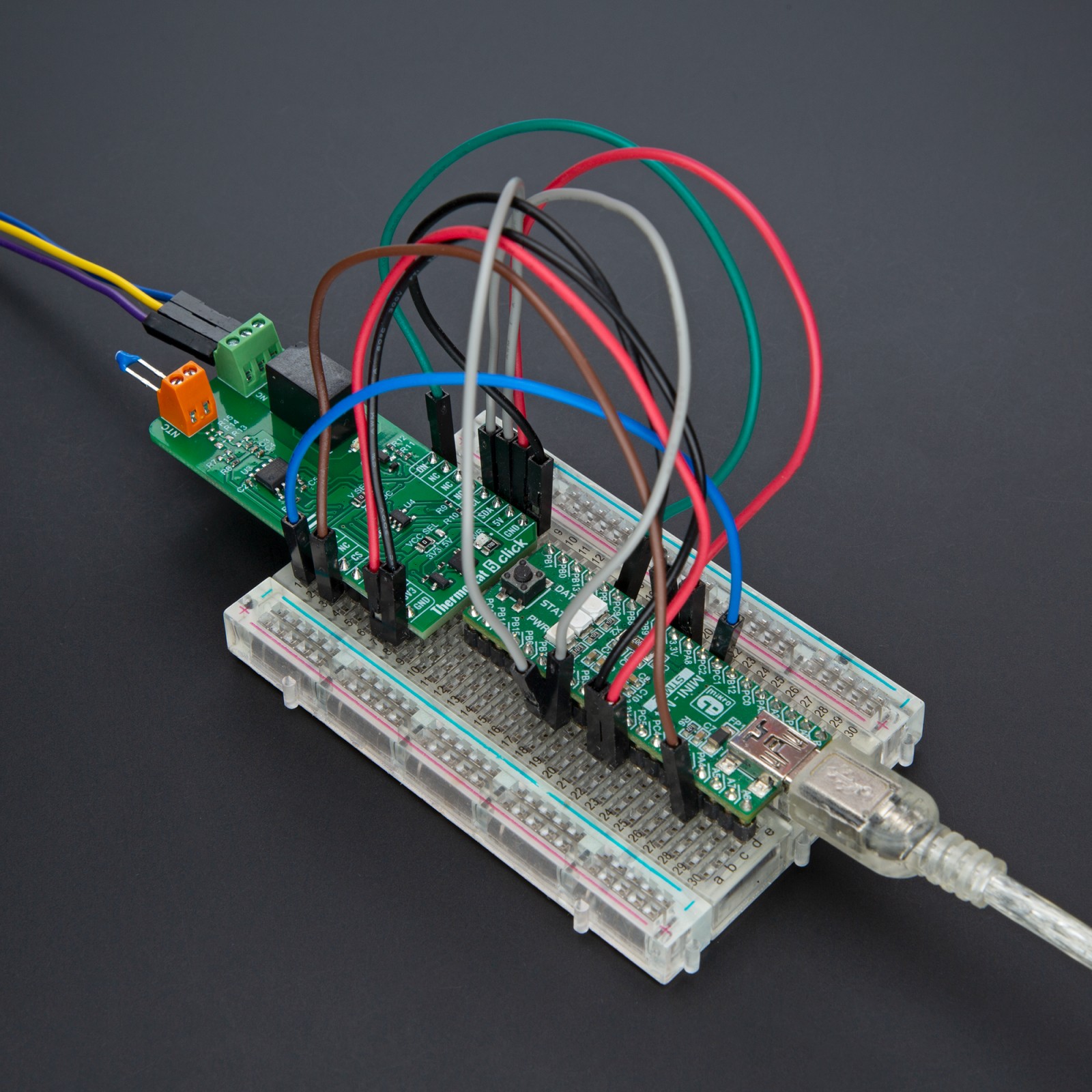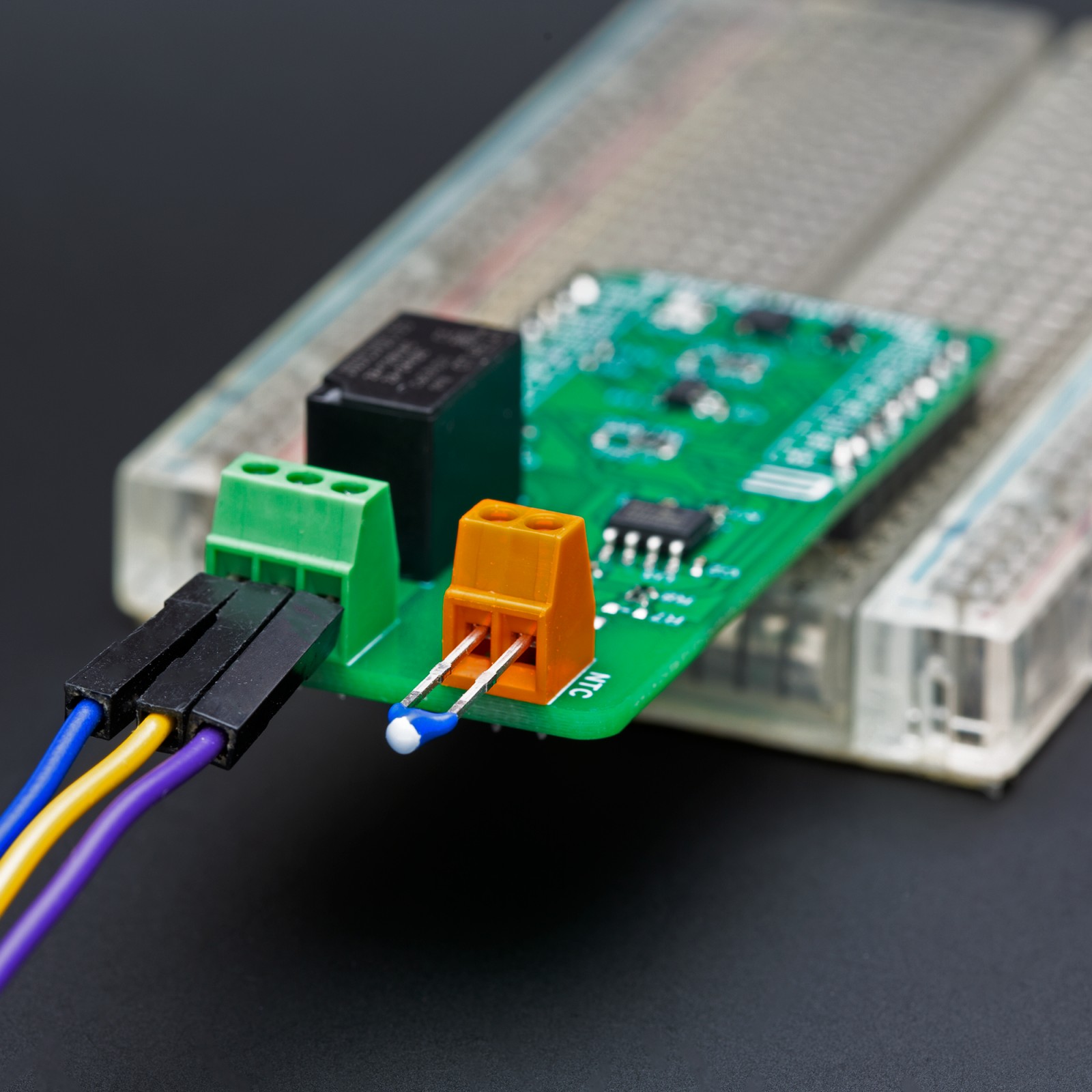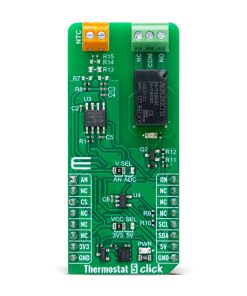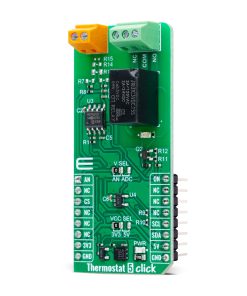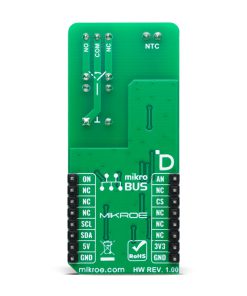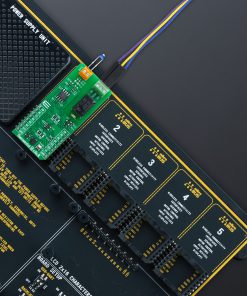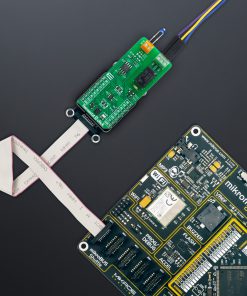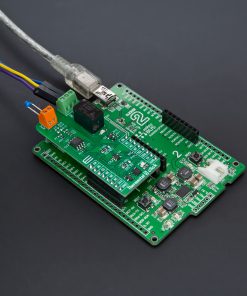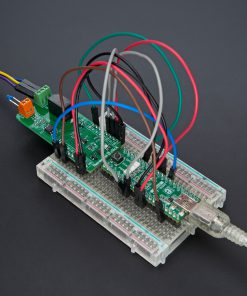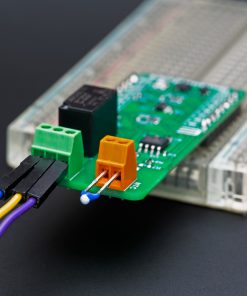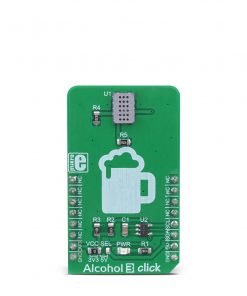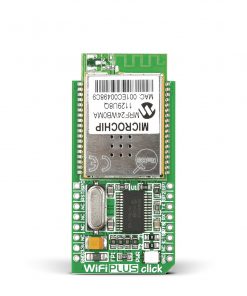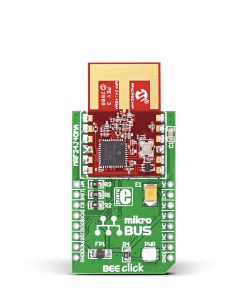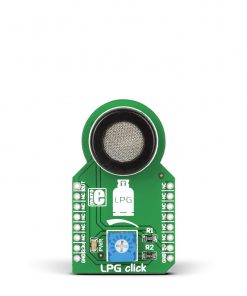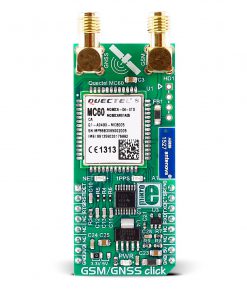Thermostat 5 Click is a compact add-on board designed for precise temperature monitoring and control of external devices. This board features the MCP6022 operational amplifier and MCP3221 A/D converter, both from Microchip, ensuring accurate signal processing. The board features an NTC connector for temperature sensing, a dual-mode signal processing option (analog or digital) selectable via the V SEL jumper, and a high-current J1031C3VDC.15S SPDT relay for external load control. The relay supports up to 2A loads, with an orange LED indicating its active status, while the board operates with 3.3V or 5V logic levels. Thermostat 5 Click is ideal for industrial automation, HVAC systems, and other temperature-sensitive applications requiring reliable and flexible control solutions.
Thermostat 5 Click is fully compatible with the mikroBUS™ socket and can be used on any host system supporting the mikroBUS™ standard. It comes with the mikroSDK open-source libraries, offering unparalleled flexibility for evaluation and customization. What sets this Click board™ apart is the groundbreaking ClickID feature, enabling your host system to seamlessly and automatically detect and identify this add-on board.
NOTE: Thermostat 5 Click is compatible with two NTC probes from the MIKROE portfolio: the Epoxy Coated NTC Thermistor Sensor and the Nickel-plated Brass NTC Thermistor Probe. For more details, please visit their respective product pages.
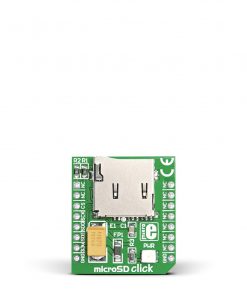 microSD Click
1 × R355.00
microSD Click
1 × R355.00 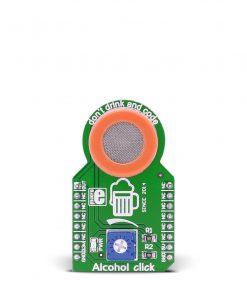 Alcohol Click
1 × R335.00
Alcohol Click
1 × R335.00 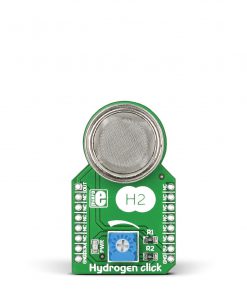 HYDROGEN Click
1 × R335.00
HYDROGEN Click
1 × R335.00 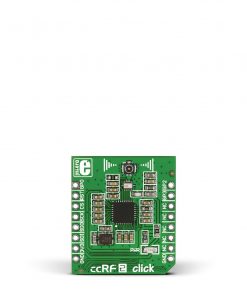 ccRF2 Click
1 × R800.00
ccRF2 Click
1 × R800.00 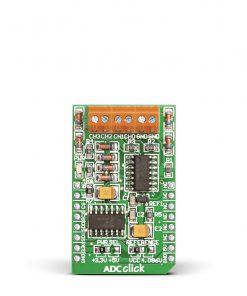 ADC Click
1 × R540.00
ADC Click
1 × R540.00 
